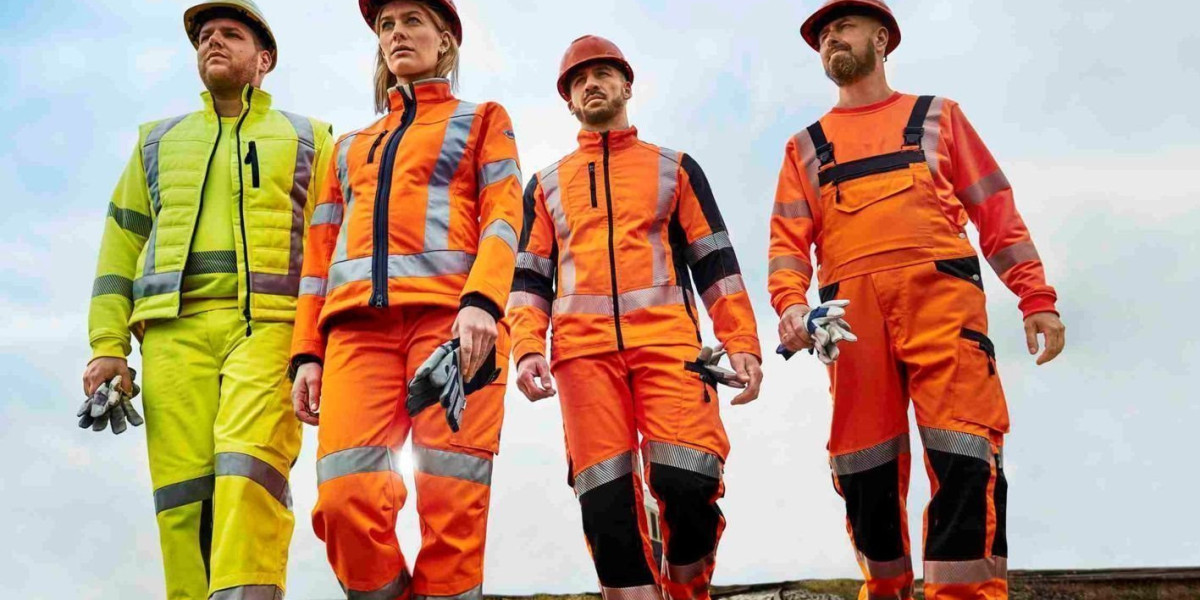Hi-vis clothing, short for high-visibility clothing, is a critical component of safety gear in numerous industries. Its primary purpose is to ensure that workers remain visible in environments where visibility is compromised or where hazards are present. These garments are designed with bright, fluorescent colors and reflective materials to enhance visibility during both daylight and nighttime conditions.
Importance of Hi-Vis Clothing
Enhanced Safety: The most significant benefit of hi-vis clothing is the protection it offers by making wearers more noticeable to operators of vehicles, machinery, or other equipment.
Accident Prevention: By increasing visibility, hi-vis clothing helps reduce the likelihood of accidents caused by poor visibility in busy or hazardous work environments.
Compliance with Safety Regulations: Many industries require hi-vis clothing to meet regulatory safety standards to protect workers and minimize liabilities.
Key Features of Hi-Vis Clothing
Fluorescent Colors: These are highly visible in natural daylight and include colors like neon yellow, orange, and green.
Reflective Strips: Positioned strategically on the clothing to reflect light from headlights or other sources during low-light conditions.
Durable Materials: Hi-vis clothing is often made from robust, weather-resistant fabrics suitable for harsh environments.
Comfort and Breathability: Modern hi-vis garments are designed for comfort, incorporating lightweight and breathable materials.
Industry Applications
Hi-vis clothing is widely used in various sectors, including:
Construction: Workers on construction sites benefit from enhanced visibility to avoid collisions with moving vehicles or machinery.
Transportation and Logistics: Delivery drivers, airport ground staff, and railway workers wear hi-vis clothing to remain visible around moving vehicles and heavy equipment.
Emergency Services: Police officers, paramedics, and firefighters use hi-vis gear to stand out in emergency situations.
Utilities and Road Maintenance: Workers on roads or utility lines require hi-vis apparel for safety amid traffic and low-visibility conditions.
Standards and Regulations
Various standards govern the design and use of hi-vis clothing to ensure effective performance:
ANSI/ISEA 107 (USA): Specifies the requirements for high-visibility safety apparel in terms of design, color, and reflective materials.
EN ISO 20471 (Europe): Defines visibility requirements for workers in hazardous environments.
CSA Z96 (Canada): Outlines performance requirements for hi-vis clothing in Canadian workplaces.
Selecting the Right Hi-Vis Clothing
When choosing hi-vis clothing, consider the following factors:
Work Environment: Assess the level of visibility required and potential hazards.
Regulatory Compliance: Ensure the clothing meets industry-specific standards.
Fit and Comfort: Select garments that fit properly and allow for ease of movement.
Weather Conditions: Opt for weather-appropriate options such as waterproof jackets or breathable vests.
Maintenance and Care
Proper maintenance extends the life and effectiveness of hi-vis clothing:
Regularly inspect for wear and tear, including faded colors or damaged reflective strips.
Follow manufacturer care instructions, such as washing in cold water and avoiding bleach.
Replace garments when they no longer provide adequate visibility.
Conclusion
Hi-vis clothing plays an essential role in protecting workers across numerous industries by increasing visibility and reducing accidents. Understanding its features, industry applications, and regulatory requirements helps ensure the right c








